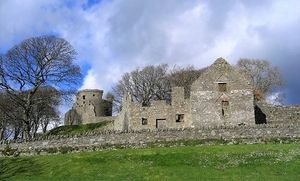My uncle David is the family historian. He has spent many hours researching the family tree and has discovered relatives in Australia and Argentina.
My uncle is not alone in his desire to trace his genealogical roots. The BBC series Who do you think you are? is very popular. In the programme, famous people research their family history, in an effort to discover how the past has shaped their lives.
Family trees
Family trees can give us a sense of identity and provide an historical anchor for our lives. In times of increased social mobility and family disintegration, we want to know who we are and where we are from.
There are many genealogies in the Bible, including that of Jesus. The family tree of Jesus is found at the beginning of Matthew’s Gospel, in the opening chapter of the New Testament. Matthew records ‘the genealogy of Jesus Christ, the Son of David, the Son of Abraham’.
Matthew wants us to understand that Jesus comes to fulfil the promise of God to bless all the peoples of the earth through one of Abraham’s descendants, and to send a Saviour-King who is even greater than king David. He traces the family tree of Jesus, from Abraham to David, and down to Joseph, who he identifies as ‘the husband of Mary, of whom was born Jesus, who is called Christ’.
The genealogy of Jesus establishes the historicity and humanity of Jesus. Jesus was a real person who lived in the first century. Jesus entered the world through a mother’s womb, as we all do. Born of Mary, Jesus was part of a Jewish family, with roots extending all the way back to the patriarch Abraham. But there is something unique about Jesus, for he is more than human.
Trip-step
Over 40 years ago, I went on a school trip to Dundrum Castle, in County Down in Northern Ireland. The Norman castle, which remains largely intact, has an internal spiral staircase. As children we raced up the staircase, eager to reach the top. As we climbed quickly, we developed a rhythm as we went round and round and higher and higher. But then, almost at the top of the staircase, there was a step which was different from the rest; it was lower than the others. It was a deliberate trip-step, intended to cause attackers to stumble as they neared the top of the castle.
There is a rhythm to Matthew’s genealogy, as he works his way through three sets of 14 generations. Along the way there are occasional variations in the pattern — sometimes a mother is mentioned in addition to the father. But right at the end, there is a trip-step. Joseph is identified as the husband of Mary but not as the father of Jesus.
Matthew goes on to explain (in verses 18-25) why Joseph is not the father of Jesus; it is because Jesus was conceived in Mary through the Holy Spirit. Mary was a virgin when she gave birth to Jesus, which is in fulfilment of a prophecy in the book of Isaiah in the Old Testament (Isaiah 7:14). So, there is something exceptional about the conception and birth of Jesus.
God with us
Indeed, this is the wonder of Christmas: in the person of Jesus, the eternal God the Son has become man. To his existing divine nature, the Son of God now adds a human nature. He becomes both fully God and fully man, a mysterious union of two natures in one person. Amazingly, Jesus is God incarnate. He is ‘Immanuel’, which means ‘God with us’.
This then sets the scene for the remainder of Matthew’s Gospel. In the chapters that follow, Matthew introduces us to the unique person of Jesus, who is both human and divine, and who has been born to be the Saviour for sinners.
Genealogies usually encourage us to look back in time, but as we read the genealogy of Jesus we should look forward in time, because Jesus offers us the astonishing prospect of becoming part, not of his human family, but of his heavenly family.
We can become part of the family of God, not through natural birth but through spiritual birth, through the work of the Holy Spirit, who convicts us of our sinfulness and prompts us to trust in Jesus as our Saviour.
All types and conditions of people are represented in the genealogy of Jesus: men and women, kings and commoners, Jews and non-Jews. That communicates to us that Jesus comes as the Saviour for people drawn from every part of society and from every ethnic group throughout the world.
Welcome
Jesus welcomes people from all backgrounds. Everyone and anyone who puts their hope in Jesus becomes an adopted son or daughter of the living God. Maybe this Christmas, as we remember Jesus becoming part of a human family, you will become part of Jesus’ heavenly family, as you put your trust in the Son of God who became the son of Mary?
David Magowan is pastor of Carey Baptist Church, Reading






